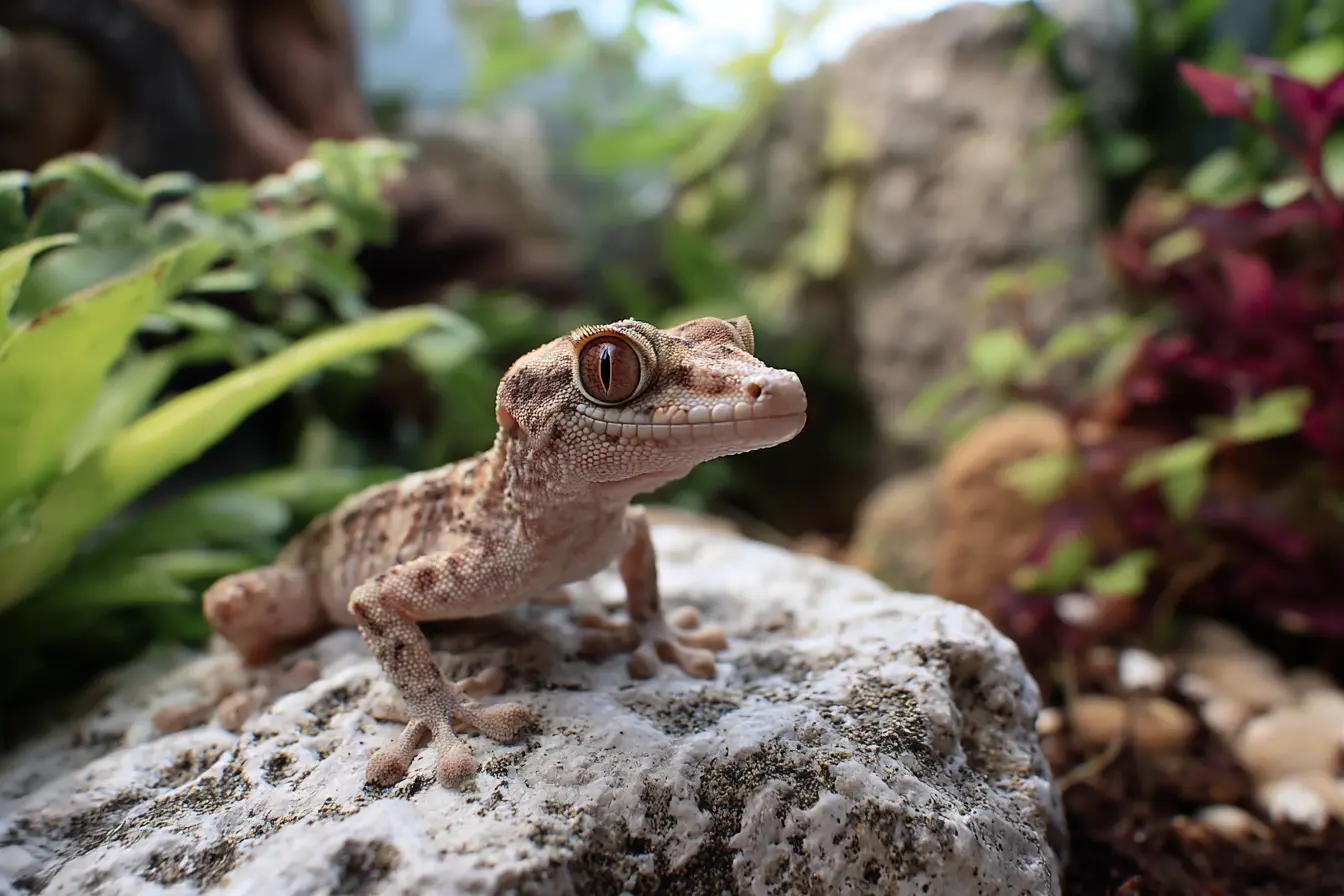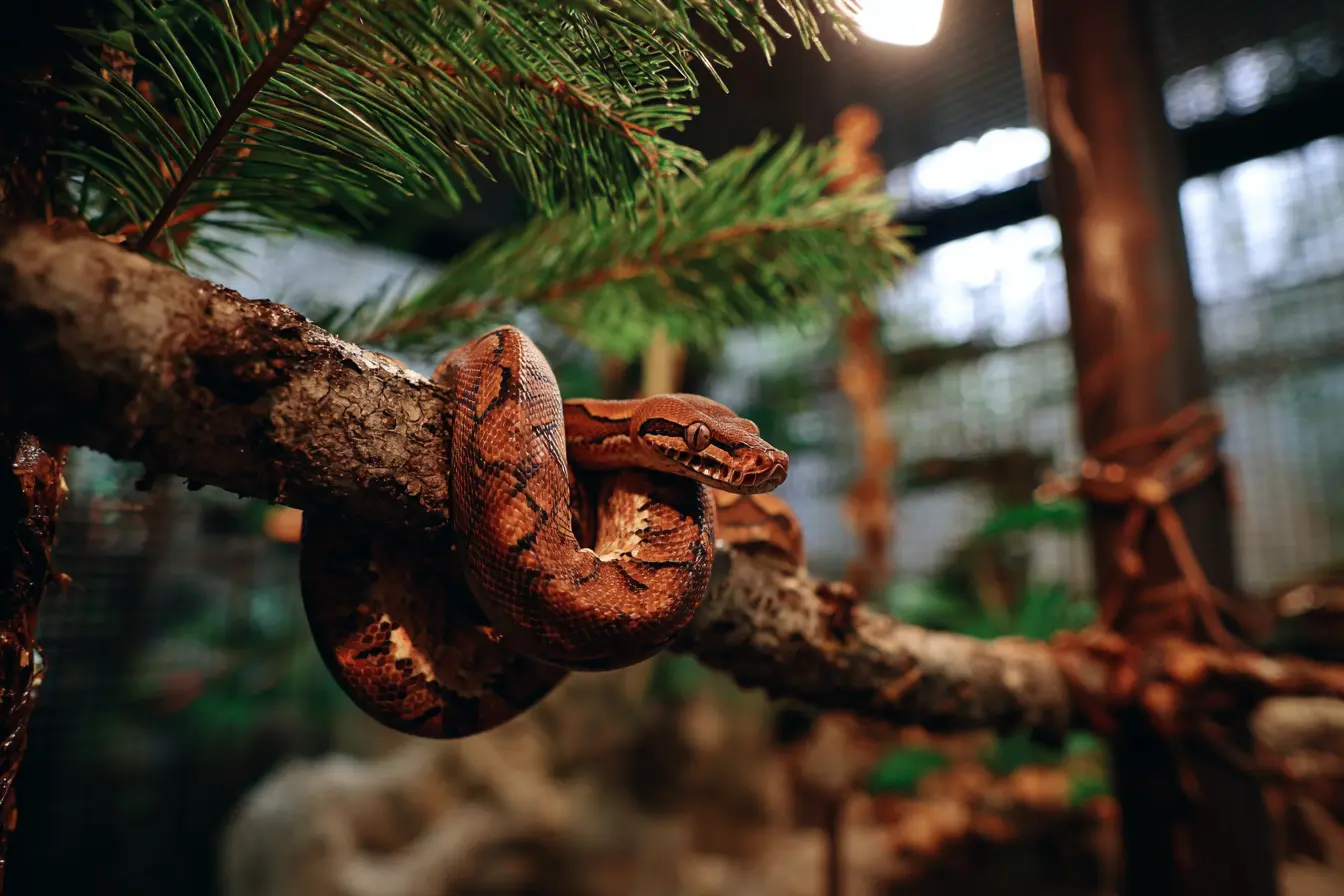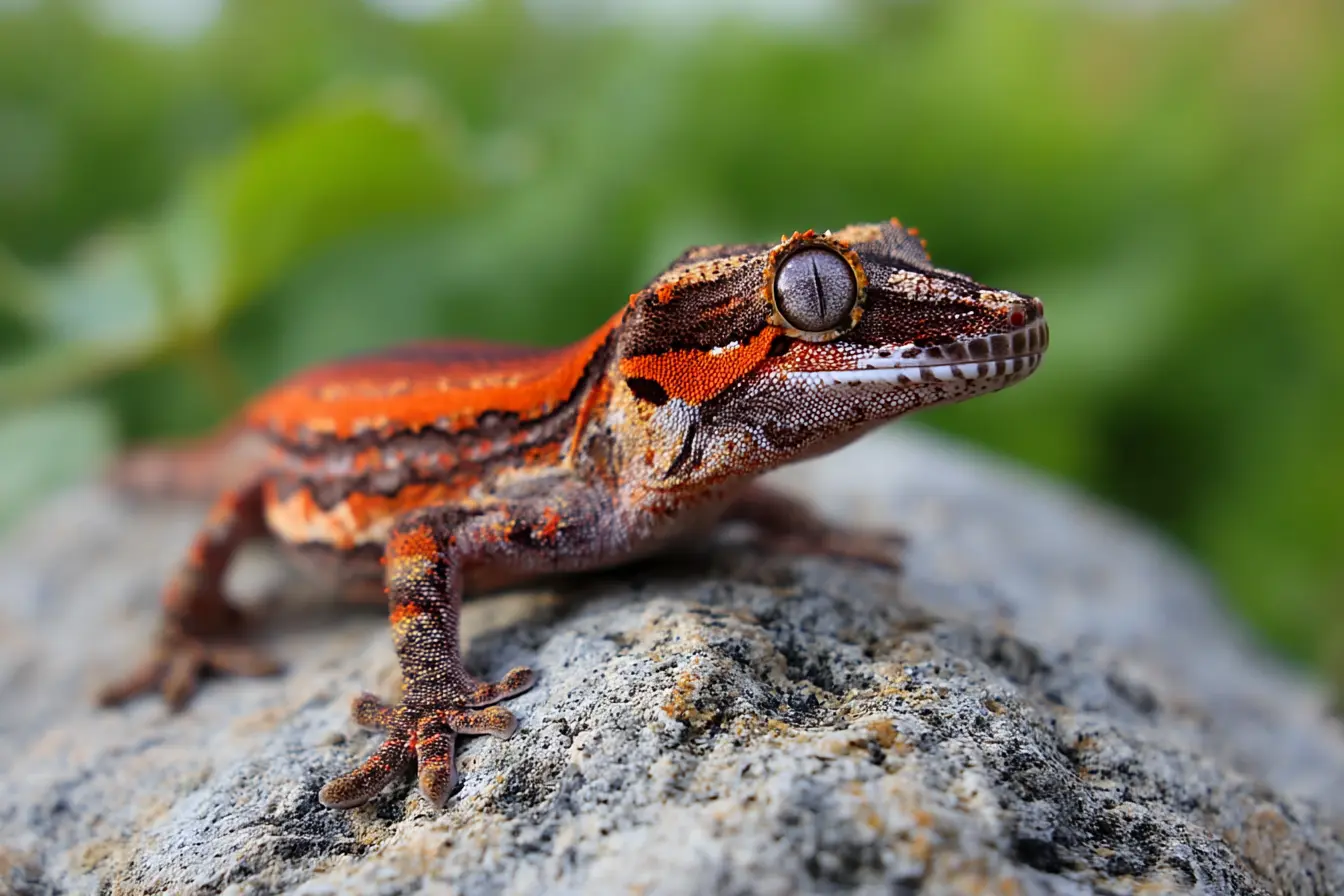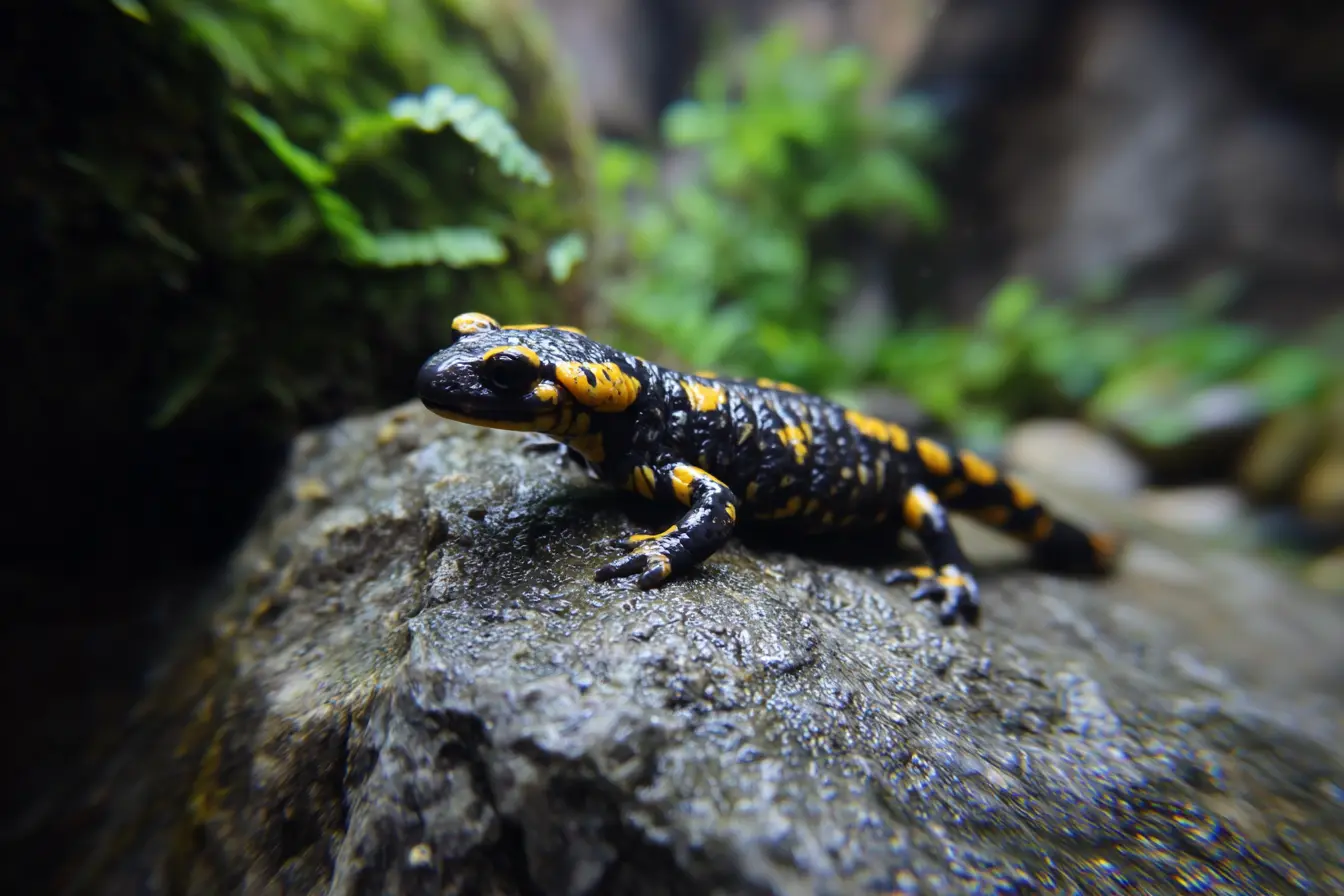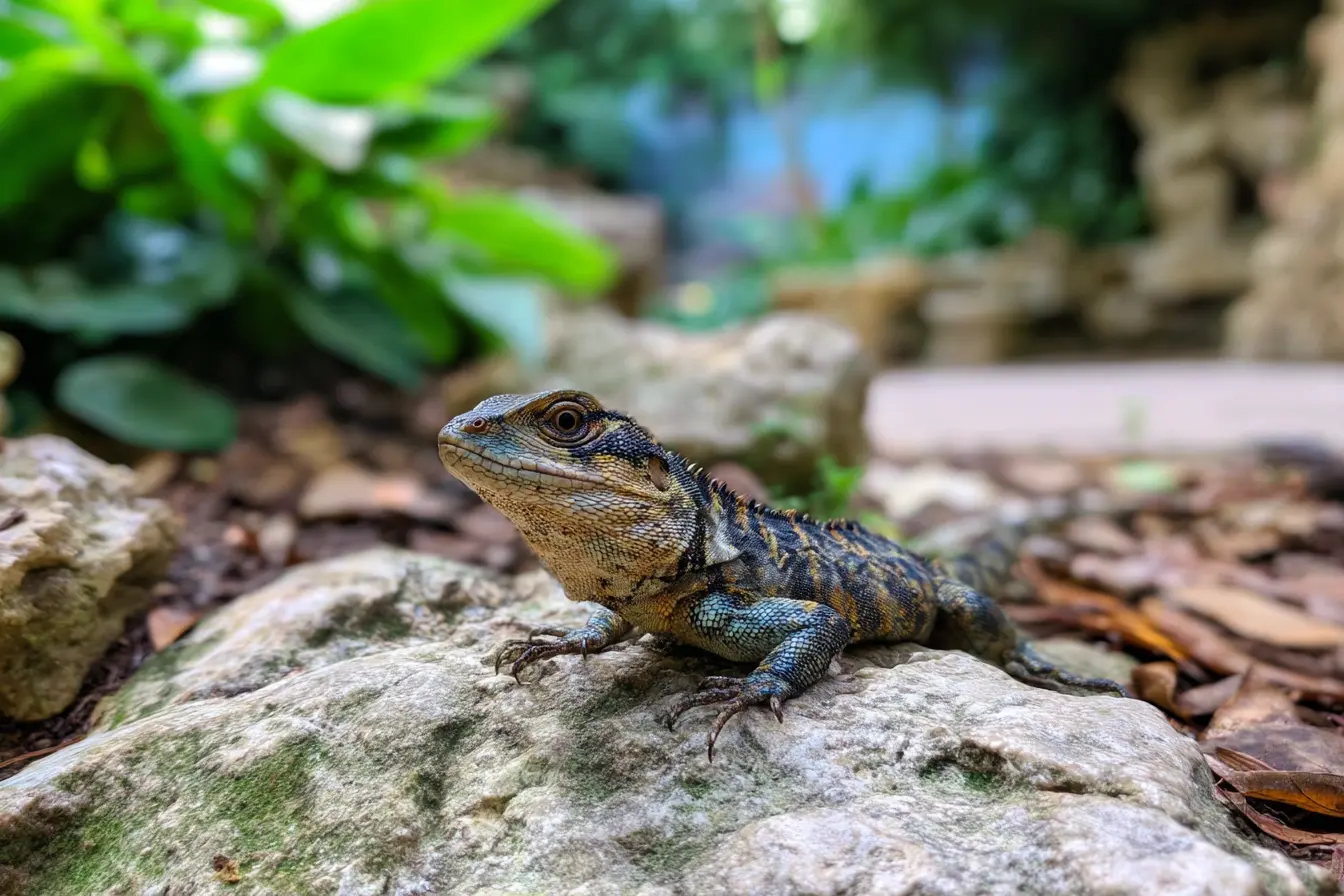
Painted Dragon / Stellion Care Guide: A Bold and Hardy Reptile for Desert Environments
The Painted Dragon, also known as the Stellion (Laudakia stellio), is a robust and charismatic agamid lizard native to the arid and rocky regions of the Eastern Mediterranean and Middle East. Known for its spiny appearance and bold behaviour, the Stellion is a fascinating species that makes an excellent display pet for reptile enthusiasts interested in desert dwellers.
This care guide explores everything you need to know about keeping a Painted Dragon happy and healthy in captivity, from enclosure setup and diet to behaviour and veterinary care.
What is a Painted Dragon (Stellion)?
The Stellion (Laudakia stellio) is a medium-sized, diurnal lizard that can grow up to 30 cm in length, including its tail. Its body is heavily built, with a broad head and distinctive spiny scales across its back and tail. Colouration varies by subspecies and locale, ranging from earthy browns and greys to more vibrant yellow or orange hues, often with banding or mottling.
Stellions are highly active, territorial lizards that enjoy basking in high heat and perching on rocky outcrops. Males may display dominant behaviours such as head bobbing and push-ups. With proper care, Painted Dragons can live 8–12 years in captivity.
Sourcing and Selecting a Painted Dragon
Where to Buy
- Captive-bred from reputable breeders: Preferable for health and ease of acclimation
- Specialist exotic reptile shops: May carry Stellions or be able to source them
- Reptile expos and conventions: Great for seeing animals and talking to breeders directly
Wild-caught individuals are sometimes seen in the trade but may be more stressed, aggressive, and parasite-prone.
What to Look For
Choose a gecko that exhibits:
- Bright, clear eyes
- Alert, responsive behaviour
- Full, unbroken tail and limbs
- No visible signs of shedding issues or injuries
- Good body weight and muscle tone
Housing and Enclosure Setup
Enclosure Size
A single Painted Dragon should be kept in a vivarium of at least 90 cm (L) x 45 cm (W) x 45 cm (H), though larger is better. A pair (one male and one female) or a small harem (one male to two females) can be kept in a larger enclosure, but males should not be housed together due to territorial aggression.
Provide ample floor space and vertical basking spots using rocks and sturdy branches.
Substrate
Use a dry, desert-style substrate that mimics the Stellion’s natural habitat:
- Washed play sand
- A 70:30 sand-to-soil mix
- Reptile-safe desert blends
Spot-clean daily and replace the substrate every 4–6 weeks or as needed.
Decor
Enrichment and hiding are important for Stellions. Include:
- Large basking rocks
- Secure hides (rock caves or cork bark)
- Branches or slate ledges for climbing
- Dry foliage or artificial plants for visual cover
Heating and Lighting
Painted Dragons are desert dwellers and need strong heating and UVB exposure to thrive.
- Basking spot: 40–45°C
- Ambient daytime temperature: 28–32°C
- Cool end: 24–26°C
- Night-time temperature: 18–22°C
Use a basking bulb and a 10–12% UVB fluorescent tube or mercury vapour bulb. Maintain a 12-hour day/night cycle, and replace UVB bulbs every 6–12 months as per manufacturer guidelines.
Humidity and Water
Keep humidity low, ideally between 20–40%. Provide good ventilation to prevent respiratory issues.
Offer a shallow water dish with clean water daily. You can also lightly mist a rock surface to allow the dragon to drink droplets, which mimics natural behaviour.
Diet and Nutrition
Staple Foods
Stellions are primarily insectivorous, though they will accept plant matter:
- Crickets
- Dubia roaches
- Locusts
- Mealworms (occasionally)
Plant Matter
- Dandelion greens
- Endive
- Butternut squash
- Kale (in moderation)
Feed juveniles daily and adults every 2–3 days. All insects should be gut-loaded and appropriately sized.
Supplementation
To support strong bones and overall health, supplement feedings with:
- Calcium without D3 at most meals
- Calcium with D3 once per week
- Multivitamin every 1–2 weeks
Handling and Behaviour
Temperament
Stellions are observant and bold but can be territorial. They may tolerate gentle handling with time, though they are best enjoyed as active display animals.
Tips for Handling
- Start slowly and allow your lizard to become familiar with your presence
- Avoid sudden movements or approaching from above
- Scoop gently from below and support the whole body
- Handle over a low, soft surface to avoid injury
- Keep sessions short and stress-free
Stellions may display threat behaviours (head bobbing, tail curling) if they feel uncomfortable. Avoid pushing boundaries.
Common Health Issues
Metabolic Bone Disease (MBD)
Results from inadequate calcium or UVB. Symptoms include weakness, limb deformities, and lethargy.
Respiratory Infections
Caused by poor ventilation or high humidity. Signs include wheezing, mucus, and open-mouth breathing.
Parasites
Wild-caught dragons are especially susceptible. Look for weight loss, abnormal stools, or reduced appetite.
Dehydration
Even desert species need regular hydration. Signs include wrinkled skin, sunken eyes, and sluggishness.
Consult a reptile veterinarian at the first sign of illness.
Specialist Vet Care
Routine Checkups
Annual visits to a reptile vet are recommended for:
- Physical exams
- Faecal parasite screening
- Weight and growth monitoring
Emergencies
Seek veterinary care immediately if you observe:
- Extreme lethargy
- Loss of appetite for more than a week
- Visible wounds or abscesses
- Respiratory distress or gaping
Care and Maintenance
Daily Tasks
- Check and record enclosure temperatures
- Refill water
- Feed and remove uneaten prey
- Spot-clean substrate
Weekly Tasks
- Clean water and food dishes
- Replace basking surfaces
- Observe shedding, stool quality, and behaviour
Monthly Tasks
- Replace or deep-clean substrate
- Disinfect decor and surfaces
- Check UVB and heating equipment
Final Thoughts
The Painted Dragon or Stellion (Laudakia stellio) is a tough, captivating lizard that thrives in a well-managed desert setup. Their spiny, dragon-like appearance and engaging behaviour make them a rewarding species to keep, particularly for intermediate keepers looking for something a little different.
With the right balance of heat, lighting, diet, and space, your Stellion will live a long and active life—basking, exploring, and occasionally showing off that confident desert attitude.
Vets near you
Speciality vets
- Aquatics vet specialists
- Birds vet specialists
- Camelids vet specialists
- Cats vet specialists
- Cattle vet specialists
- Deer vet specialists
- Dogs vet specialists
- Equines vet specialists
- Exotic vet specialists
- Goats vet specialists
- Pigs vet specialists
- Poultry vet specialists
- Sheep vet specialists
- Small Mammals vet specialists
- Wild vet specialists
